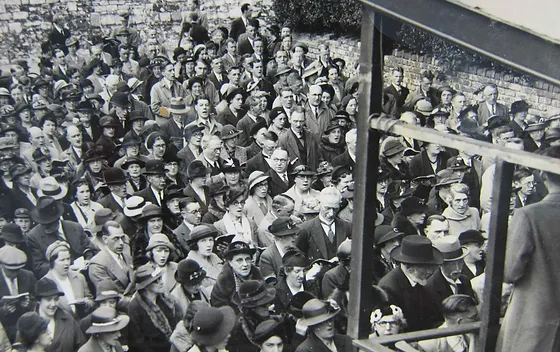
Highlights of the 1904-1905 Welsh Revival
Incredible scenes from the 1904-1905 revival in Wales:
There are plenty of highlights one can look at when discussing the issue of revival. Here I want to look at one of the two major revivals that broke out in Wales – the one of 1904-1905. There were actually many revivals in Wales, and I have already examined the Welsh Revival of 1859 in another piece.
And I have also discussed aspects of the 1904-1905 revival before. In one piece I made use of the noted historian of revival, J. Edwin Orr, and his 1973 volume, The Flaming Tongue: The Impact of 20th Century Revivals: https://billmuehlenberg.com/2021/05/13/do-it-again-the-welsh-revival/
That article provides a lot of numbers, facts and figures on the revival, etc. But here I want to offer some stories about the revival, and look at what some others have said about this amazing occurrence, including some who wrote about it at the time it was happening. Here are but a few highlights:
As to the main figure of the revival, Evan Roberts, G. Campbell Morgan said this about him:
Evan Roberts is hardly more than a boy, simple and natural, no orator; with nothing of the masterfulness that characterized such men as Wesley and Whitefield and Dwight Lyman Moody; no leader of men. One of the most brilliant writers in one of our papers said of Evan Roberts, in a tone of sorrow, that he lacked the qualities of leadership, and the writer said if but some prophet did now arise he could sweep everything before him. God has not chosen that a prophet shall arise. It is quite true. Evan Roberts is no orator, no leader. What is he? I mean now with regard to this great movement. He is the mouthpiece of the fact that there is no human guidance as to man or organization. The burden of what he says to the people is this: “It is not man; do not wait for me; depend on God; obey the Spirit.” (Roberts, ed., pp. 171-172)
And consider this portrait of the revival:
“The most extraordinary thing about the meetings which I attended”, said W. T. Stead, a London journalist… “was the extent to which they were absolutely without any human direction or leadership.” His description continues: “‘We must obey the Spirit’ is the watchword of Evan Roberts, and he is as obedient as the humblest of his followers. The meetings open—after any amount of preliminary singing, while the congregation is assembling—by the reading of a chapter or a psalm. Then it is go-as-you-please for two hours or more. And the amazing thing is that it does go and does not get entangled in what might seem to be inevitable confusion. Three-fourths of the meeting consists of singing. No one uses a hymn-book. No one gives out a hymn. The last person to control the meeting in any way is Mr. Evan Roberts. People pray and sing, give testimony or exhort as the Spirit moves them. As a study of the psychology of crowds I have seen nothing like it. You feel that the thousand or fifteen hundred persons before you have become merged into one myriad-headed, but single-souled personality.” (Evans, p. 127)
People of all classes and conditions were impacted by the revival. As in the 1859 revival, colliers were heavily impacted:
The section of the community most affected by the heavenly fire was undoubtedly the coal-miners. Underground, the coal seams echoed their praises and the coal faces witnessed the conversion of many of the workers. The revival was not without its social impact in the mines. Some colliery managers claimed that the revival had made the workers “better colliers”, others spoke of “greater regularity in the attendance of the men at work”. Even trade union disputes were affected by the revival…. (Evans, p. 125)
Not just men but even beasts were impacted:
The horses are terribly puzzled. A manager said to me, “The haulers are some of the very lowest. They have driven their horses by obscenity and kicks. Now they can hardly persuade the horses to start working, because there is no obscenity and no kicks.” (Stead, p. 110)
It was not just hardened miners and nominal Christians who were converted – agnostics and atheists were also powerfully touched by the Spirit of God. One example was Tom Hughes, a member of the Ethical Society (a group of “out-and-out skeptics”). He came to some revival meetings, but stood afar. On the fourth day he actually went in. The story continues:
At 11 P.M. he left the chapel, and went home. His wife saw at a glance that a change had come over him, and that he was in great distress. He went to his little parlor, and took down from his shelves one by one the books he had so prized as a member of the local Ethical Society, and dropped them on the table. Then with great deliberation and with intense emotion he took up one at a time, tore it in pieces, and made a bonfire of the whole lot in his own grate.
As the flames shot up the chimney, and the blaze increased, his wife said: “Tom! Tom! What’s the matter? You’ve lost your balance. You’ll put the place on fire.” “Nothing of the kind, my dear,” he said. “The One who has kept us safe through all these years while those cursed books were under my roof, will certainly take care of us tonight while I am destroying them.” (Shaw, pp. 179-180)
Another story tells of another sceptic who kept trying to interrupt the meetings:
Before Mr. Roberts had finished reading, a clear voice in petulant mood, rang out like the booming of a heavy gun. “I want to ask a question.” Confusion would have ensued but for the unruffled calm of Mr. Roberts. He did not look in the direction of the speaker. “I want to ask a question,” again challenged the querulous voice. The rude interruption produced no visible effect upon the manner or mood of the evangelist. Evan Roberts appeared immovable. His eyes were closed and his lips were moving. Evidently, he was in touch with his Lord, probably committing the situation into the hands of his Master. To my inexperienced mind, the situation was perilous….
Because no one heeded his interruption, he proceeded to carry out his threat. All evening he had been sitting remorsefully in the gallery. He moved toward the stairs, the crowd hindering rapid progress; his intention was to reach the deacon’s pew, if not to occupy the pulpit. It was a defiant action. God has His own way of dealing with defiance and arrogance. As the man came slowly down the crowded stairway, the unexpected happened. As in the case of Saul of Tarsus, on the Damascus road, the Holy Spirit overpowered this man – he would have collapsed on the stairs had not the people upheld him – constraining him to cry out for mercy and pardon. What a scene followed! When the people realized the full import of what had happened, the shout went up, “He has been saved! He has been saved!” (Matthews, pp. 44-46)
As always, before a society can be changed, the church must be changed:
What is the character of this revival? It is a church revival. I do not mean by that merely a revival among church members. It is that, but it is held in church buildings. I have been saying for a long time that the revival which is to be permanent in the life of a nation must be associated with the life of the churches. What I am looking for is that there shall come a revival breaking out in all our regular church life. The meetings are held in the chapels, all up and down the valleys, and it began among church-members, and when it touches the outside man it makes him into a church-member at once. I am tremendously suspicious of any mission or revival movement that treats with contempt the Church of Christ, and affects to despise the churches. Within five weeks, twenty thousand have joined the churches. I think more than that have been converted, but the churches in Wales have enrolled during the last five weeks twenty thousand new members. It is a movement in the Church and of the Church, a movement in which the true functions and forces of the Church are being exercised and filled. (Morgan in Stead, p. 108)
And as churches were transformed, the surrounding culture also experienced radical change. Plenty of social and cultural change was reported. In the area of popular entertainment (dance halls, theatres. Music halls, etc.), there was a noticeable change:
It was not the result of thunderous denunciations by some preacher. Neither was it in consequence of anyone aggressively demanding the giving up of such carnal pursuits. By the good hand of God upon us, we were mercifully delivered from the unwelcome ministrations of cranks propagating pet theories that would have produced confusion. It was the undemonstrative voice of the Holy Spirit quietly influencing daily conduct, turning thought into new channels, producing the instantaneous results that no other power could have accomplished. (Matthews, p. 62)
Consider the issue of alcohol:
Drunkenness received a “heavy blow” in 1904-05, and public houses suffered. In one neighbourhood, containing the greater than usual number of twenty-two public houses, they hardly made sufficient funds to pay for the gas. Family situations were changed as fathers brought home regular money for the first time, and in many of these new homes family worship was practised. (Gibbard pp. 139-140)
One observer during the revival said this:
Prayer meetings are held in the trains, and many converts are made. The public-houses and beer clubs are empty; old debts are paid; jealousy vanishes; church and family feuds are healed; great drunkards, prize-fighters, and gamblers pray in the services, and give their testimony; the chapels throughout the populous valleys of Glamorganshire are full every night; all denominations have sunk their small differences, and co-operate as one body; and the huge processions along the streets send a thrill of terror through the vilest sinners . . . The Revival is the topic in all spheres and amongst all sections of society; and strong people are overwhelmed by reading the newspaper accounts of it. (Evans, pp. 161-162)
Crime was also impacted:
On Christmas Day practically the whole of Wales was on its knees. Probably every chapel in the principality was open, and was filled. In some towns which I visited there were monster demonstrations. Certain churches had combined for united processions, and in some cases the paraders marched the whole night long. Inquiries of the police showed that not a single prisoner was detained throughout the holidays. The officer in charge of the Miskin district, a large and populous portion of the Mountain Ash area, said that he had been stationed there for the past ten years, and that this Christmas time was the quietest he had experienced. (Stead, p. 141)
Heaven-sent revival is an incredible thing. One can only pray, “Do it again Lord”.
For further reading on the Welsh Revival of 1904-05
Evans, Eifion, The Welsh Revival of 1904. Evangelical Press of Wales, 1969, 1993.
Gibbard, Noel, Fire on the Altar: A History and Evaluation of the 1904-1905 Revival. Bryntirion Press, 2005.
Henley, Wallace, Call Down Lightening: What the Welsh Revival of 1904 Reveals about the End Times. Emanate, 2019.
Jones, Brynmor, Voices from the Welsh Revival 1904-1905. Evangelical Press of Wales, 1995.
Lowe, Karen Joy, Carriers of the Fire: The Women of the Welsh Revival 1904/05: Their Impact Then, Their Challenge Now. Shedhead Publications, 2004.
Matthews, David, I Saw the Welsh Revival. Moody Press, 1957, 2016.
Roberts, Richard Owen, ed., Glory Filled the Land: A Trilogy on the Welsh Revival (1904-1905) [H. Elvet Lewis, G. Campbell Morgan, I.V. Neprash]. International Awakening Press, 1989.
Shaw, S. B., The Great Welsh Revival. Edited by Darrel King. Bridge-Logos, 2005, 2014.
Stead, William and G. Campbell Morgan, The Welsh Revival & The Story of the Welsh Revival. Trumpet Press, 1905, 2022. 2022.
See my companion piece on the 1859 Welsh revival here: https://billmuehlenberg.com/2023/09/07/highlights-of-the-1859-welsh-revival/
[2023 words]


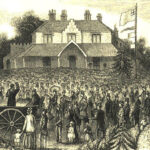

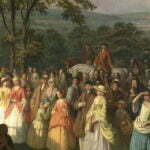

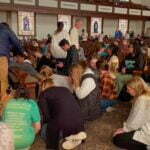
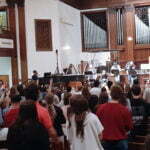



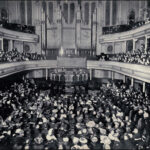
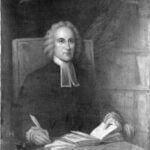



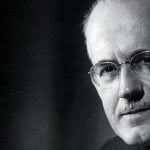

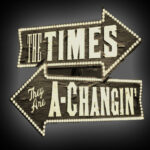



Ah – there it is – the reduced crime.
The similar thing jumped out at me listening to Acts when Paul went to Ephesus. God told him he would be kept safe “because I have many people in this city”. Even when a crowd attempted to rally against Paul (as per usual) the difference this time was the officials sided with Paul and told the rabble-rousers to go home or be charged with rioting. He stayed there teaching for years. How productive was that!
Now, when Jesus said that his followers are like the little pinch of yeast that gets added to a big lump of dough, then maybe God doesn’t really need all that many people to change the atmosphere of an entire city. Maybe revivals of a city are not as wishful thinking and pie-in-the-sky as it seems. It got better from 1788 to 1860, so maybe it can get better from 2023 to ???
Hope so Tim.
Back in the 50s when Billy Graham came and preached here in Australia most people here in Australian at the time were Christian and attended church. Most people here in Australia today are atheist. Australia today is 70 percent atheist and only 2 percent of the population here in Australia today attend church. It’s very sad. It’s also unfortunately too late for the West and the West is never going to see another revival. Non Western parts of the world such as Africa Asia Eastern Europe the Middle East Central America South America the Caribbean and other parts of Oceania continue to have revivals though which is great.
Thanks John. But two things are crucial here: how one defines certain terms, and what the actual figures are. I am not sure where you got your numbers from, but one reputable survey on church attendance says this: “In 2021, around one in five Australians (21%) reported attending religious services frequently i.e., at least monthly. Among frequent attenders, 13% attended weekly or more often.” https://www.ncls.org.au/articles/australians-attending-church/
And the last official Australian census said that 44% of Australians claimed to be Christian, while 40% claimed to have no religion. Bear in mind however that ‘having no religion’ of course is not identical to being an atheist. https://www.abs.gov.au/media-centre/media-releases/2021-census-shows-changes-australias-religious-diversity
So we can say that the majority of Australians are still religious, with Christianity the largest religion being held to, while those not wanting to identify with any religion is rising (but they clearly are not a majority as yet).
Sure, census results do not really tell us exactly who is a real deal Christian. But neither do figures on simple church attendance (or lack thereof)!
And given that real revival is ultimately the work of God, and not us, we must be careful in telling God what he can and can not do! So I will keep praying for God to revive the West yet again. But yes, you are right that God is certainly at work in the non-Western world (although Eastern Europe is part of the West).
John Muhleison, it might be case of It’s not the people who take part in census that count, it’s the people who count the census. It’s called the numbers game.
David Skinner UK